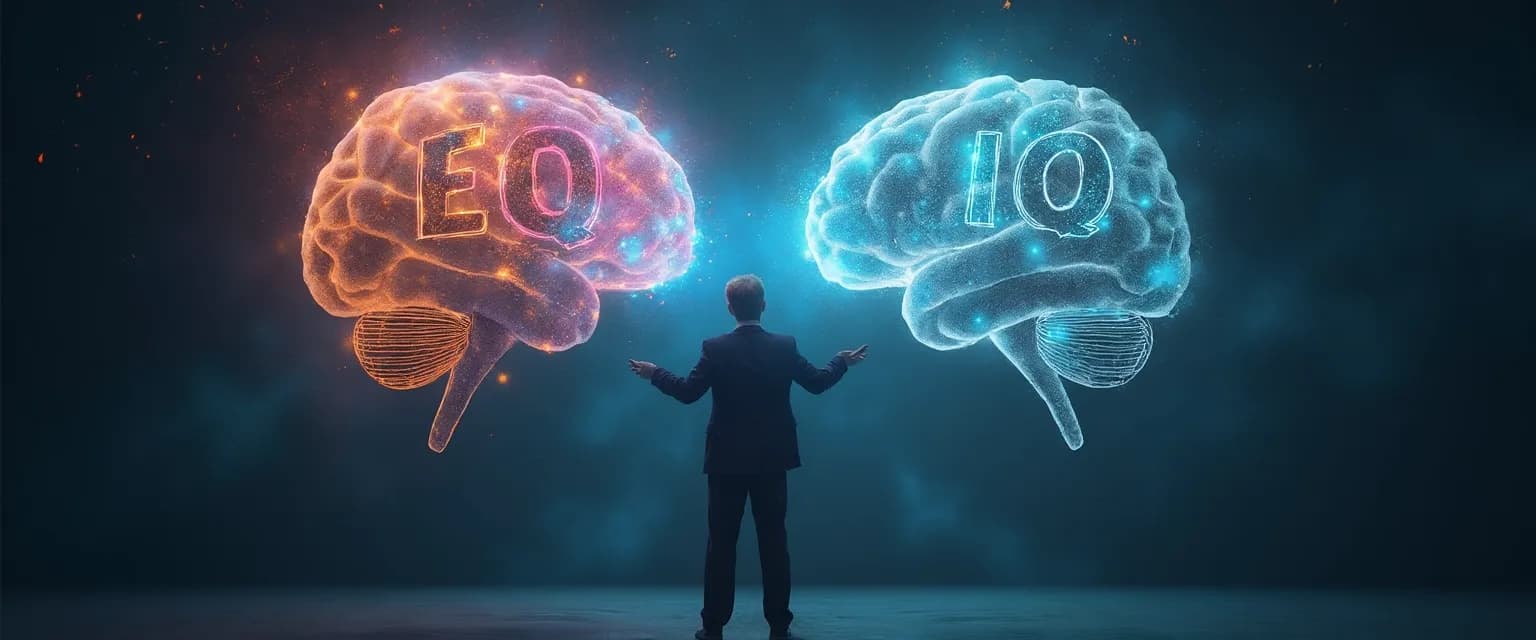7 Ways the Relationship Between Intelligence and Emotional Intelligence Transforms Leadership
The relationship between intelligence and emotional intelligence has been widely misunderstood in leadership development. For decades, we've placed IQ on a pedestal, assuming that analytical brilliance alone creates exceptional leaders. But research tells a different story. While traditional intelligence provides the foundation for problem-solving and strategic thinking, emotional intelligence amplifies these capabilities in ways that transform good leaders into great ones. Together, these complementary forms of intelligence create a powerful synergy that drives both personal and organizational success.
Neuroscience research reveals that the relationship between intelligence and emotional intelligence isn't merely theoretical—it's biological. When leaders engage both their analytical and emotional centers, they access a more comprehensive decision-making network. This integration allows them to process complex information while remaining attuned to subtle emotional dynamics that influence effective boundary setting and team cohesion.
Let's explore seven specific ways these intelligence types complement each other in leadership contexts, creating a more nuanced and effective approach to guiding teams and organizations.
The Complementary Relationship Between Intelligence and Emotional Intelligence in Decision-Making
When making critical decisions, the relationship between intelligence and emotional intelligence creates a powerful leadership advantage. Traditional intelligence helps leaders analyze data, identify patterns, and evaluate potential outcomes—the rational components of decision-making. Emotional intelligence complements this by helping leaders understand the human impact of those decisions, anticipate emotional responses, and navigate sensitive situations with empathy.
Consider how this relationship works in practice: A leader with strong analytical skills might identify the need for departmental restructuring based on efficiency metrics (IQ). However, their emotional intelligence allows them to introduce these changes with appropriate sensitivity, addressing team members' concerns and maintaining morale through the transition.
Neurologically, this process involves both the prefrontal cortex (analytical processing) and the limbic system (emotional processing) working in concert. This integrated approach leads to more balanced decisions that consider both logical outcomes and human factors.
To strengthen this complementary relationship, try the "perspective-shift technique"—after analyzing a situation logically, deliberately shift to consider how various stakeholders might feel about potential solutions. This simple practice enhances neural connections between thinking and feeling, strengthening your ability to access both intelligence types simultaneously.
Developing Your Intelligence and Emotional Intelligence Simultaneously
The relationship between intelligence and emotional intelligence isn't fixed—both can be developed through intentional practice. While traditional intelligence grows through cognitive challenges, problem-solving, and continuous learning, emotional intelligence develops through self-reflection, empathy exercises, and mindful interaction with others.
The "dual-development approach" offers a practical framework for strengthening both simultaneously:
- Pair analytical challenges with emotional awareness exercises
- Practice identifying emotions during complex problem-solving
- Seek feedback on both your reasoning and your emotional impact
- Study cases where technical solutions failed due to emotional oversight
This integrated approach creates a positive feedback loop—as your emotional awareness grows, you become more receptive to learning, enhancing cognitive development. Similarly, as your analytical skills sharpen, you gain more mental bandwidth to process emotional nuances.
A simple daily practice involves the "emotion-thought journal"—spend just three minutes noting situations where your thoughts and feelings seemed to conflict, then identify what each intelligence type was trying to tell you. This builds awareness of how emotions influence thinking patterns and decision processes.
Leveraging the Intelligence-Emotional Intelligence Relationship for Team Success
The most effective leaders don't just develop the relationship between intelligence and emotional intelligence within themselves—they cultivate it throughout their teams. By modeling how analytical and emotional capabilities complement each other, leaders create cultures where both forms of intelligence are valued and nurtured.
Ready to implement these principles? Start by explicitly acknowledging both the analytical and emotional components in team discussions. Recognize team members who demonstrate this integration, and create opportunities for those with different strengths to collaborate and learn from each other.
Organizations that master the relationship between intelligence and emotional intelligence gain a significant competitive advantage. They make better decisions, navigate change more effectively, and create more engaging workplaces where talent thrives. By embracing both forms of intelligence, you'll develop leadership capabilities that extend beyond traditional measures of success, creating lasting positive impact for yourself and your organization.




